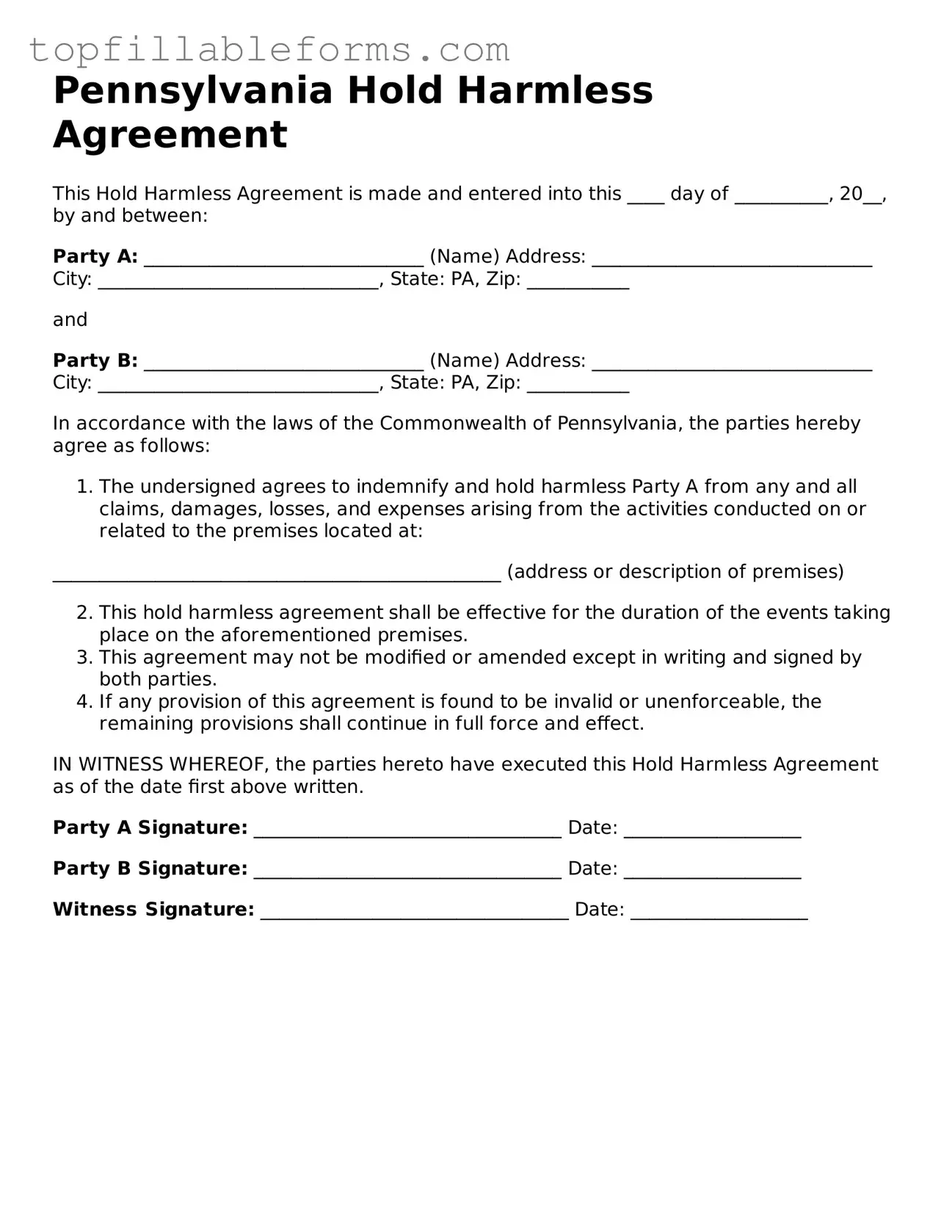Pennsylvania Hold Harmless Agreement
This Hold Harmless Agreement is made and entered into this ____ day of __________, 20__, by and between:
Party A: ______________________________ (Name)
Address: ______________________________
City: ______________________________, State: PA, Zip: ___________
and
Party B: ______________________________ (Name)
Address: ______________________________
City: ______________________________, State: PA, Zip: ___________
In accordance with the laws of the Commonwealth of Pennsylvania, the parties hereby agree as follows:
- The undersigned agrees to indemnify and hold harmless Party A from any and all claims, damages, losses, and expenses arising from the activities conducted on or related to the premises located at:
________________________________________________ (address or description of premises)
- This hold harmless agreement shall be effective for the duration of the events taking place on the aforementioned premises.
- This agreement may not be modified or amended except in writing and signed by both parties.
- If any provision of this agreement is found to be invalid or unenforceable, the remaining provisions shall continue in full force and effect.
IN WITNESS WHEREOF, the parties hereto have executed this Hold Harmless Agreement as of the date first above written.
Party A Signature: _________________________________
Date: ___________________
Party B Signature: _________________________________
Date: ___________________
Witness Signature: _________________________________
Date: ___________________
